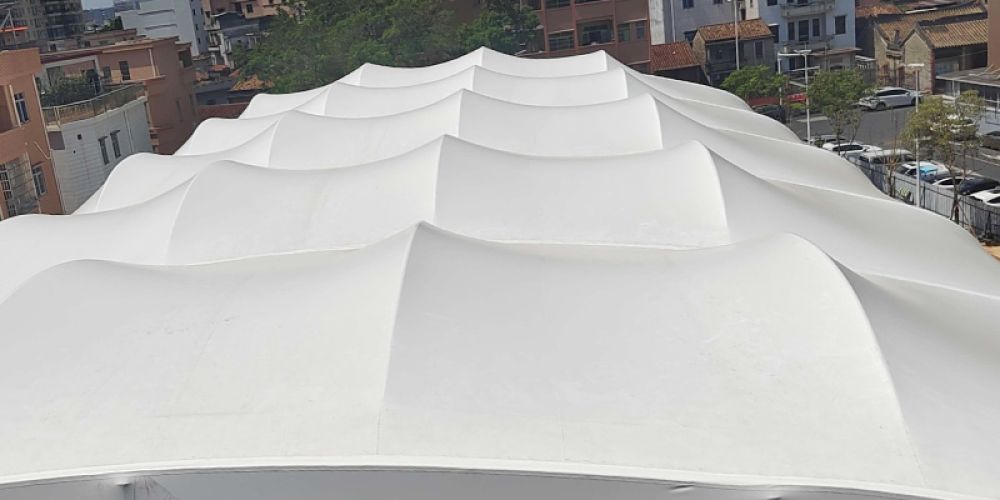
Translated in English: As a new type of building form, membrane structure buildings mainly use the following materials:
1. Membrane materials
Membrane materials are the core materials of membrane structure buildings. According to their materials and performance, they can be divided into the following categories:
PTFE (polytetrafluoroethylene) membrane materials
Features: Excellent weather resistance, UV resistance and self-cleaning ability, with a service life of more than 25 years.
Application: Suitable for large permanent buildings, such as stadiums, exhibition centers, etc.
PVC (polyvinyl chloride) membrane materials
Features: Low cost, good flexibility, but slightly worse weather resistance than PTFE, and the service life is generally 15-20 years.
Application: Commonly used in small and medium-sized buildings or temporary structures, such as landscape sketches, awnings, etc.
ETFE (ethylene-tetrafluoroethylene copolymer) membrane materials
Features: Good light transmittance, light weight, strong impact resistance, often used in buildings that require large-area lighting.
Application: Such as the exterior wall material of the "Water Cube" National Aquatics Center.
Silicone coated membrane
Features: It has extremely high flexibility and elasticity, suitable for complex curved surface modeling.
Application: Mostly used in art installations or special-shaped buildings.
2. Support structure materials
Membrane structures require support structures to maintain their shape. Common materials include:
Steel
Features: High strength, easy to process into various shapes, and is the most commonly used support material in membrane structures.
Application: Such as steel cables, steel trusses, etc.
Aluminum alloy
Features: Light weight, corrosion resistance, suitable for buildings with strict requirements on structural deadweight.
Application: Such as spatial grid structures, edge members of tensile membrane structures.
Carbon fiber composite materials
Features: High strength, light weight, but high cost, suitable for projects with extremely high requirements on structural performance.
Application: Such as high-end sports facilities, aerospace-related buildings.
3. Connectors and accessories
In membrane structures, connectors and accessories are used to fix and connect membrane materials and supporting structures. Common materials include:
Stainless steel
Features: Strong corrosion resistance, suitable for outdoor environments.
Application: such as bolts, rivets, cable anchors, etc.
Aluminum alloy
Features: light weight, easy to process, suitable for weight-sensitive structures.
Application: such as connection nodes, clamps, etc.
High-strength synthetic fiber
Features: such as Kevlar fiber, which has high strength and wear resistance, and is often used in cables and prestressed components.
4. Auxiliary materials
Sealant and adhesive
Features: used for joint treatment between membrane materials to ensure waterproofness and airtightness.
Application: such as silicone sealant, polyurethane adhesive, etc.
Windproof net and sunshade net
Features: enhance the wind resistance of membrane structure or provide sunshade function.
Application: such as high-density polyethylene (HDPE) net.